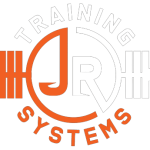Isometric training has been a popular form of exercise for decades and is gaining popularity in recent years due to its benefits in tendon health. If you’re looking to build strength, improve mobility, and prevent injury, incorporating isometric exercises into your fitness routine can be a great way to achieve your goals. In this blog post, we’ll delve into the science behind isometric training and explain why it is key for tendon health.
What is Isometric Training?
Isometric exercises are a type of strength training that involves contracting your muscles without any movement. Unlike traditional strength training exercises, which involve movement, isometric exercises require you to hold a static position for a set period of time. This can be done using resistance equipment such as weights or resistance bands, or by simply using your own body weight.
Why Isometric Training is Key for Tendon Health
Tendons are the tough fibrous tissues that connect your muscles to your bones and help transfer force from your muscles to your bones. They play a critical role in your ability to perform everyday movements and are vulnerable to injury and damage if not properly maintained. Here are some of the key reasons why isometric training is key for tendon health:
Improves Tendon Strength
Isometric training has been shown to improve tendon strength by increasing the force your tendons can withstand. This is important because stronger tendons are less likely to become injured or damaged, especially when performing high-impact or repetitive movements. [RR4] Incorporating isometric exercises into your fitness routine can help you build stronger tendons. Building stronger tendons can aid in not only the rehabilitation process of an injury, but is also vital to keep your joints healthy and strong. For example, athletes who are required to run and sprint may develop knee pain. An isometric split squat is a great way to train the leg in a non-invasive way, as you can easily manipulate how low you sink into the split squat.
Promotes Tendon Healing
If you do happen to sustain an injury to your tendons, isometric exercises can help speed up the healing process. By gently contracting the muscle around the injured tendon, you can stimulate blood flow to the area, promoting tissue repair and reducing inflammation. This, in turn, can help you recover more quickly and reduce the risk of further injury.
Increases Tendon Elasticity
In addition to improving strength and promoting healing, isometric training can also increase the elasticity of your tendons. This means that your tendons will be more flexible and able to stretch and contract more effectively. This increased elasticity can help you move more freely and reduce your risk of injury. Some common injuries that we can look to avoid or heal are, Patellar Tendonitis, Achilles Tendonitis, Hamstring strains, as well as both Elbow and Shoulder Tendonitis.
Improves Tendon Endurance
Finally, isometric training can help improve the endurance of your tendons. This means that your tendons will be able to perform movements for longer periods of time without becoming fatigued or injured. Incorporating isometric exercises into your fitness routine can help you build stronger, more resilient tendons that are better equipped to handle the demands of your athletic pursuits or gym routine.
Examples of Isometric Exercises for Tendon Health
There are many different types of isometric exercises that you can incorporate into your fitness routine to improve your tendon health. Here are some examples to get you started:
Isometric Split Squat
By sinking into the bottom of a split squat and raising the heel of the front foot off of the ground we can effectively train the split squat in a static manner. The key here is intention, squeezing the glute of our back leg and pressing our big toe into the ground.

Isometric Push up top & bottom hold
Holding the top of a push up is an effective way to train the core and shoulder complex together. By imagining we are pushing the ground away from us, spreading our shoulders to recruit our anterior shoulder stabilizers like the Serratus. The push up hold is a simple, yet effective movement. Whereas the bottom push up hold is a bit more challenging, this position will place a greater emphasis on the Triceps, Shoulders, and Chest. The benefit of the bottom hold is you can decide exactly how low you want to go, the lower you are to the ground, the more difficult this movement is.


Isometric Hamstring Bridge
Connecting the Glutes and the Hamstrings, we are heavy on the heels and elbows here, driving our heels into the ground as we tuck our pelvis underneath us. The intent here is to drive tension into the Hamstrings while keeping the Glutes engaged. You can increase the difficulty of this exercise simply by setting your heels further away from you.

Wrapping it up
Isometric training is an effective way to improve your tendon health, prevent injuries, and enhance your overall fitness level. By incorporating isometric exercises into your workout routine, you can build stronger tendons, promote healing, increase elasticity, and improve endurance. Whether you are a seasoned athlete or just starting with fitness, adding isometric exercises such as the split squat, push-up holds, and hamstring bridge can be a great way to take your training to the next level. Remember, strong and healthy tendons are key to a pain-free and active lifestyle.

